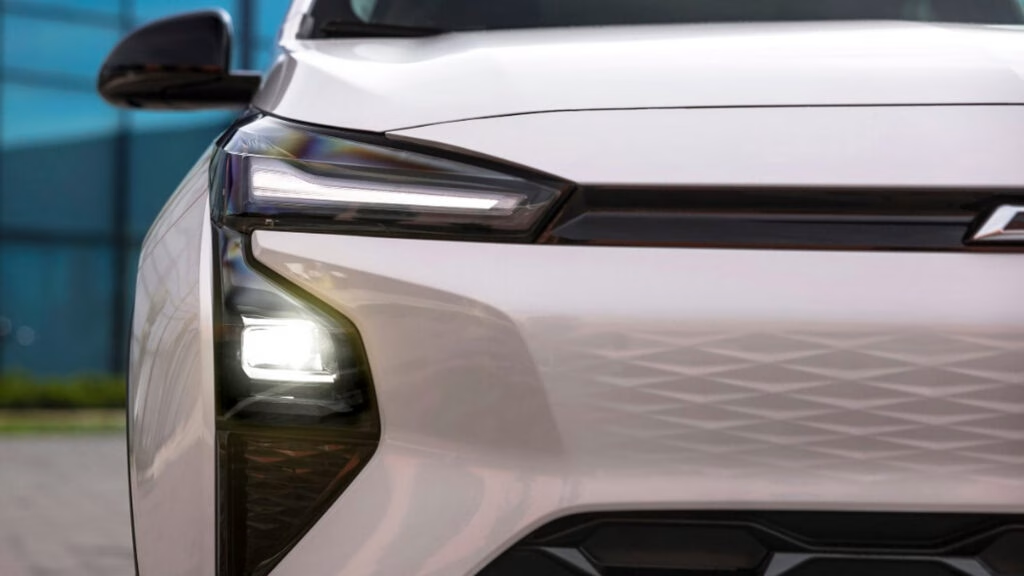What’s Actually Changing with the 2027 Chevrolet Bolt?
Chevrolet’s been busy teasing the next Bolt, and this time, they’re not hiding much. The 2027 Bolt is set to hit the scene with a sharper look, a few tech upgrades, and—here’s the kicker—access to Tesla’s Supercharger network thanks to a new NACS charging port. If you’ve been following the Bolt’s journey, you’ll know it’s always been about affordable electric driving. Now, Chevy’s aiming to keep that spirit alive, just with a bit more polish and practicality.
The teasers show a car that’s more of a thorough refresh than a ground-up redesign. Up front, you’ll spot new LED headlights and a slimmed-down grille, while the rear gets more traditional taillights (no more glass-mounted units). The black trim stretching from the headlights is still there, giving the Bolt its signature face. It’s familiar, but with a bit more attitude.
When Will the New Bolt Actually Arrive?
Here’s where things get a little tricky. Chevy says the 2027 Bolt will be revealed in full before the end of this year, but don’t expect to see them on the road until sometime in 2026. That’s pretty standard for automakers—model years often run ahead of calendar years. The last Bolt rolled off the line in late 2023, so this comeback is happening faster than most expected.
GM’s CEO Mary Barra confirmed back in December 2023 that the next-gen Bolt would debut in 2025. Since then, the company has hinted that the Bolt could grow into a family of EVs, not just a single hatchback. For now, though, all eyes are on this core model.
Is the 2027 Bolt Built on New Tech?
Early rumors had the new Bolt switching to GM’s Ultium platform, the same one underpinning their latest electric SUVs and trucks. But Chevy’s now signaling a different direction: the 2027 Bolt will ride on a revised version of its existing BEV2 architecture. That’s not a bad thing—BEV2 has proven reliable and cost-effective, especially for entry-level EVs.
What’s new under the skin? The big update is a switch to lithium iron phosphate (LFP) batteries. These are less expensive than the nickel-cobalt-manganese packs used previously, and they’re known for longer cycle life and improved safety. LFP batteries have become the go-to for affordable EVs in China and are now making their way into North American models. The result? Lower costs, more peace of mind, and—potentially—more miles per charge.
How Will Charging Change for Bolt Owners?
This is one of the most practical upgrades: the new Bolt gets a NACS charging port, which means it’ll be compatible with Tesla’s Supercharger network. For years, one of the biggest headaches for non-Tesla EV owners has been finding fast, reliable charging. With NACS, Bolt drivers will have access to thousands of high-speed chargers across North America. According to the U.S. Department of Energy, Tesla’s network accounts for over 60% of all fast chargers in the country. That’s a game-changer for road trips and daily convenience alike.
Will the 2027 Bolt Still Be Affordable?
Affordability has always been the Bolt’s calling card. The outgoing model started at $28,795, making it the cheapest long-range EV in the U.S. market. Chevy hasn’t announced official pricing for the 2027 Bolt yet, but early signals suggest it’ll come in just above the last version—likely still under $32,000 before incentives. With the new LFP batteries and streamlined production at the Fairfax factory in Kansas City, Chevy’s clearly working to keep costs in check.
It’s worth noting that the EV market is shifting fast. According to Kelley Blue Book, the average new EV price in the U.S. was around $55,000 in 2023. If Chevy can keep the Bolt’s price low, it’ll remain a standout option for budget-conscious buyers.
What’s the Real-World Impact of These Changes?
Let’s be honest: the Bolt’s not trying to be the flashiest EV on the block. It’s about practical, everyday electric driving—without the sticker shock. The design tweaks make it look fresher, but the real story is about smarter tech and better charging. For city commuters, students, or anyone looking to ditch gas without breaking the bank, the Bolt’s return is good news.
Chevy’s also hinting at “some other cool stuff” to be revealed closer to launch. That could mean new driver-assist features, infotainment upgrades, or even expanded body styles down the line. The EV landscape is evolving, and Chevy’s clearly trying to keep the Bolt relevant for the next wave of buyers.
What Should You Watch for Next?
Expect a full reveal of the 2027 Bolt before the end of this year, with more details on specs, features, and pricing. If you’re considering an affordable EV, keep an eye on how Chevy positions the Bolt against rivals like the Nissan Leaf, Hyundai Kona Electric, and the upcoming wave of budget-friendly models from other automakers.
The big takeaway? The new Bolt isn’t about perfection—it’s about smarter adjustments. Start with one change this week—maybe researching EV incentives or mapping out your local charging options—and you’ll likely spot the difference by month’s end.

